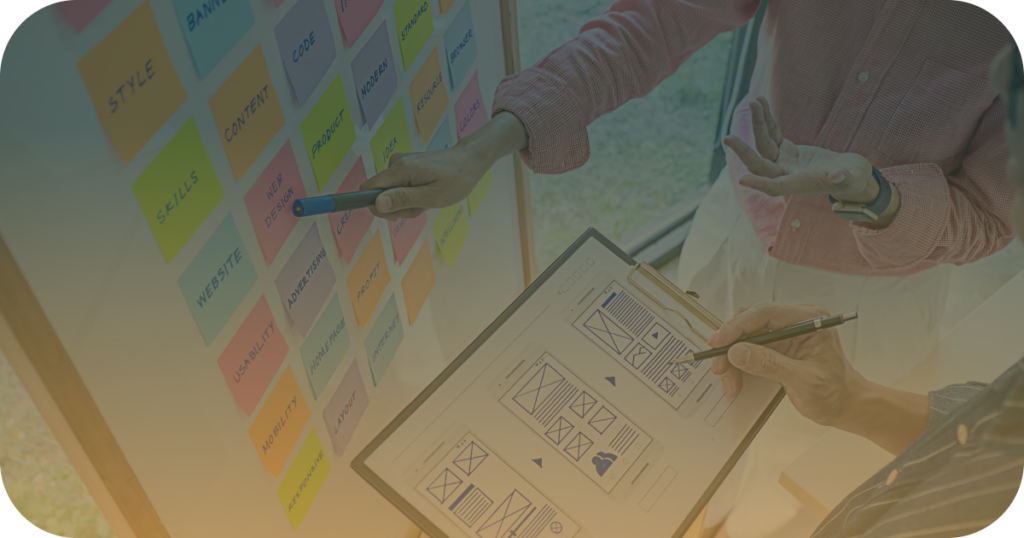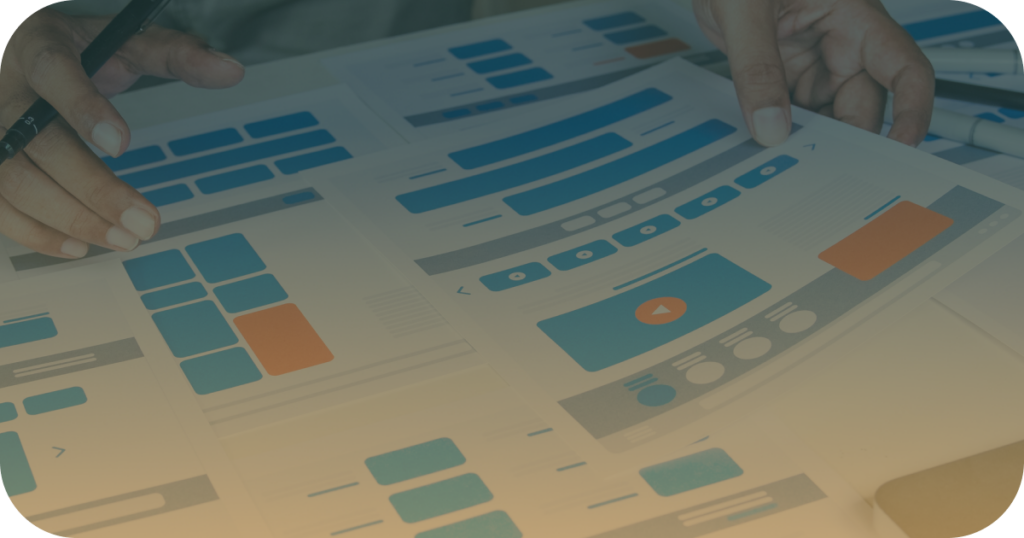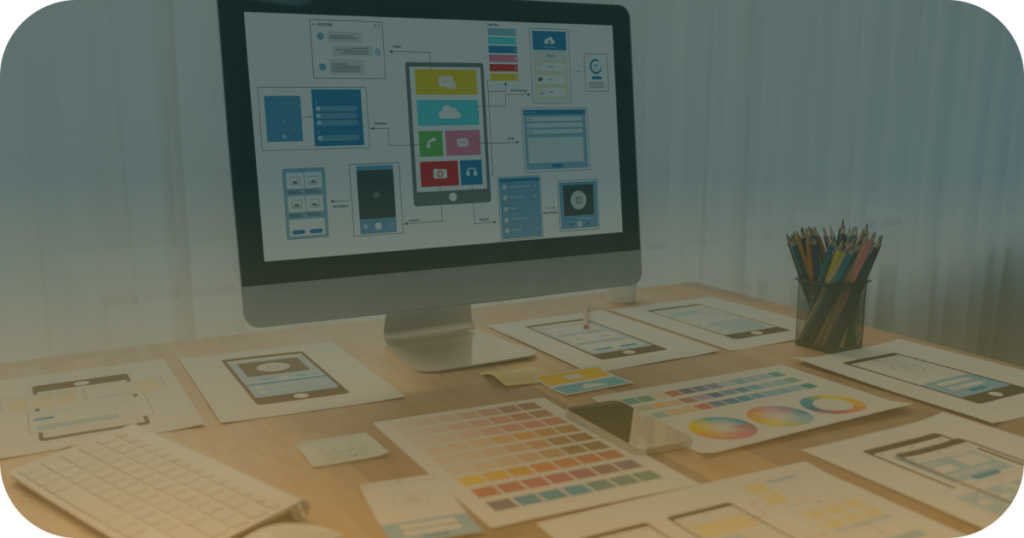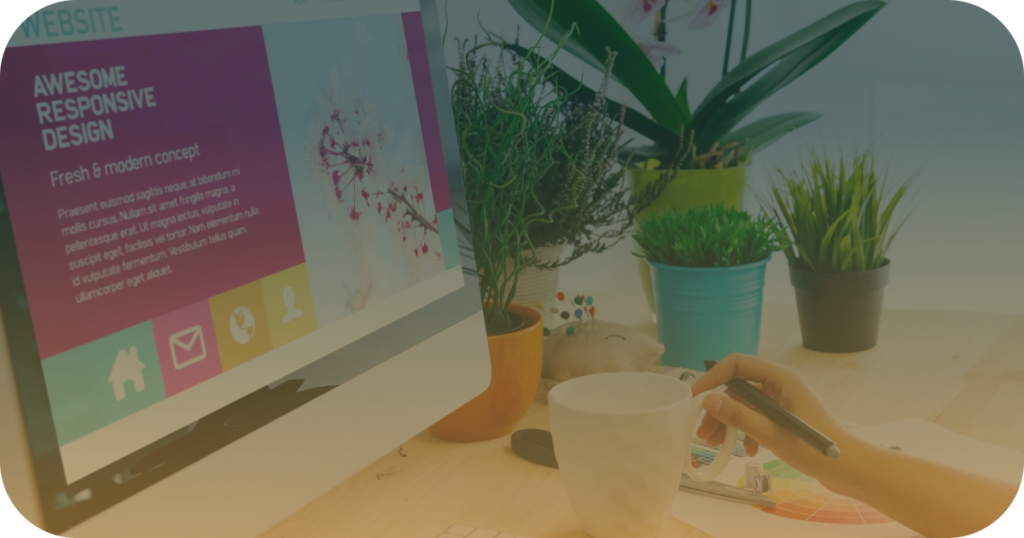All too often, design in business is misunderstood and misrepresented. For some, design is simply a commodity that you can quickly buy off the shelf and plug into your business, for others, it is seen as an extra expense and something that they would rather face later on down the road in their business. Many business owners just don’t realize that design is at the core of many, if not all, of the brands that we know and love and is often the secret sauce for one brand to stand out from another. This is even more true in the ever-competitive e-commerce landscape. From building a memorable online experience to driving repeat purchases, design in e-commerce is something that all business owners should prioritize early on. It is an investment that will pay you back tenfold down the line and ensure your long-lasting success as an e-commerce business.
1. User research

The very beginning of the UX/UI process is user research. Understanding your customer’s thoughts, emotions, and motivators allows a designer to create something that truly resonates with your customer. In this phase, it becomes much less about what we are building and more about why we are building it. If you craft an e-commerce experience around truly solving your customers’ pain points, you can be sure that will win you respect, loyalty, and ultimately increased revenue.
2. Information Architecture

This research also lends itself to delivering a fantastic information architecture for your business. By using what is learned about your customers, designers can perfectly map out the correct hierarchy for how information is displayed to a user. In this way, we ensure that the most important and relevant information to a user is prioritized and prominent in your e-commerce design. Without completing this critical phase of user research, we would be simply making assumptions about what is essential to our customers and why it is crucial. And we all know what they say about assuming…
3. Design, the fun part

Once a blueprint for your design is created by completing the information architecture, user research, and low-fidelity designs or wireframes, we can begin focusing on our aesthetic. User Interface Design (UI), or the aesthetic side of design, is the fun part. It’s when we get to start adding your beautiful product imagery, fonts, logos, and colors to your e-commerce website. Aesthetics are so fun and enticing that business owners often jump directly to this step in the process without even considering the critical steps of user research, information architecture design, and wire-framing. The problem here is that the data clearly shows that one of the most important design phases you can invest in for long-term success and a healthy return on your investment is user experience design. In fact, according to a study by Forester, good UX can actually increase your conversion rate by 400%. And every dollar invested in UX can result in an ROI of $2 to $100 dollars! This incredible return on investment clearly shows why investing in design is so critical for operating a successful e-commerce business.
This is not to say that UI doesn’t also have an impact on your bottom line. In fact, the same study completed by Forester found that user interface design has the potential to increase your conversion rate by 200%. By leveraging the power of UX with the beauty of UI, we have a truly potent combination with the potential to revolutionize your business. It’s so powerful that we honestly feel you can’t afford not to invest in design! If you go to a restaurant and don’t get nice customer service, even if the food is excellent, chances are you won’t be back. The same happens with digital experiences, if your customers don’t enjoy it, they probably won’t be back no matter how good your product is. We see this time and time again, especially when companies fail to give their mobile design the attention it deserves. Studies show that customers who have had “a negative brand experience on mobile are 62% less likely to purchase from this brand in the future.” 62%!!! That is a statistic that you don’t want to overlook. The good news is that through thorough user research, user experience design, and user testing, your e-commerce company doesn’t have to become just another statistic.
4. User testing

User testing is the design process’s last and probably most underrated step. Design is all about experimentation and testing out various hypotheses based on the thorough research we complete at the beginning of the process. But, as with science, the only true way to know whether our hypothesis is correct is through rigorous testing. This testing allows us to adjust our design based on where users experience issues and cannot complete their purchases. Testing can be completed in various phases and ways. You can test out low or high-fidelity prototypes, involve a small group of your customers to help with testing, test internally with your team, or even hire a group of testers to give you an outside opinion. The best part about innovation in the design world is that we now have amazing software tools that allow us to create a prototype of your e-commerce shop and quickly test it out without needing a single line of code. Building out and testing prototypes ultimately saves us time and money as we don’t need to waste development time and budget on making small design changes throughout a project. Instead, we can anticipate these changes and implement them quickly on our prototype until we arrive at the perfect solution and the revenue-driving e-commerce solution of your dreams.
A good UX/UI is a cost-effective way of selling your product because it can provide significant long-term benefits, including increased user satisfaction, engagement, revenue, and brand reputation, as well as reduced development and support costs. Therefore, investing in UX/UI design can help your product stand out in a crowded market and contribute to its long-term success.
